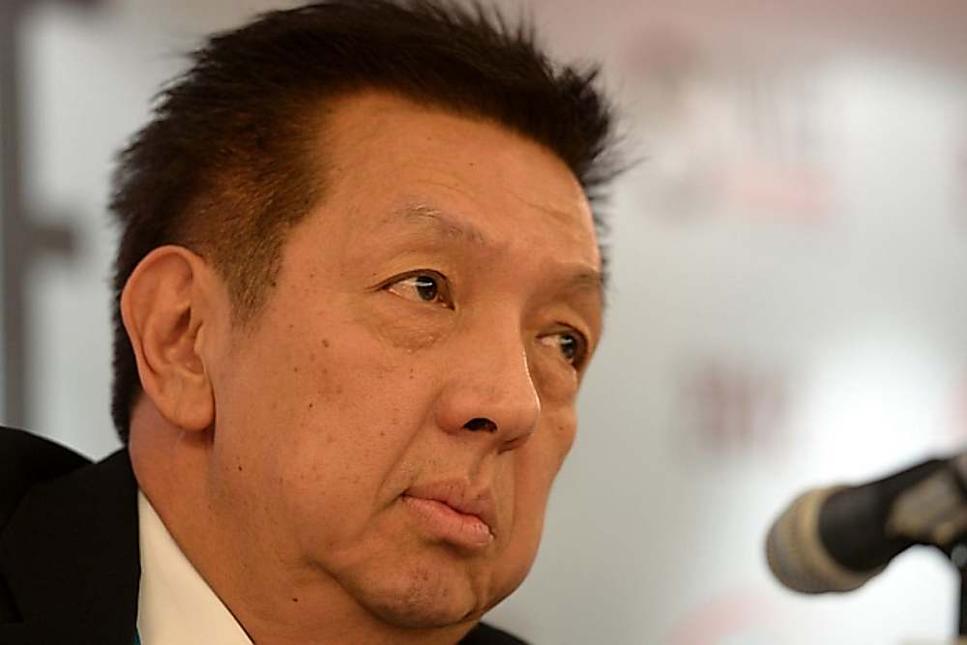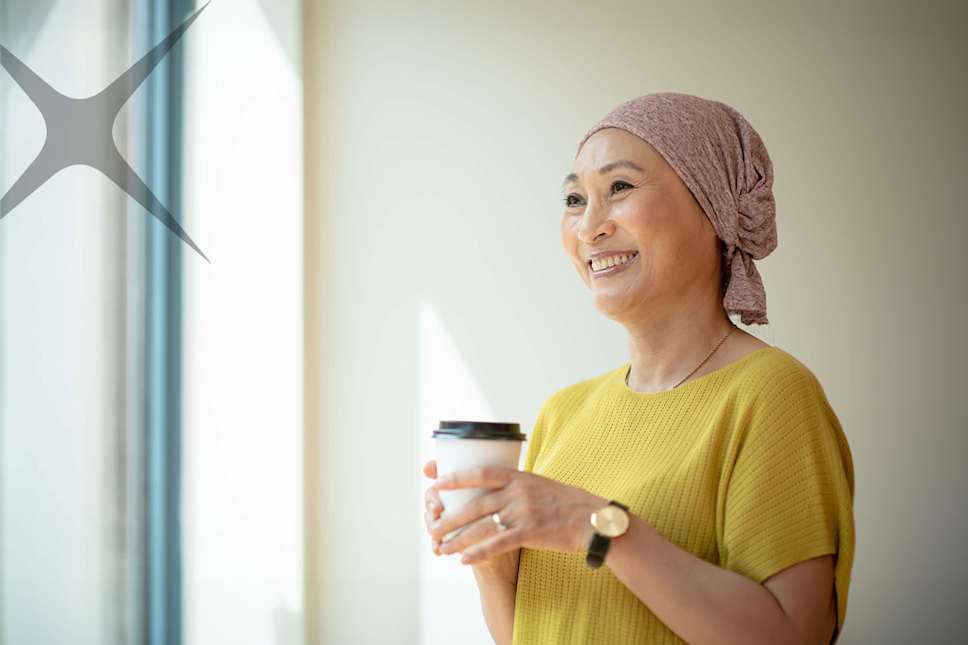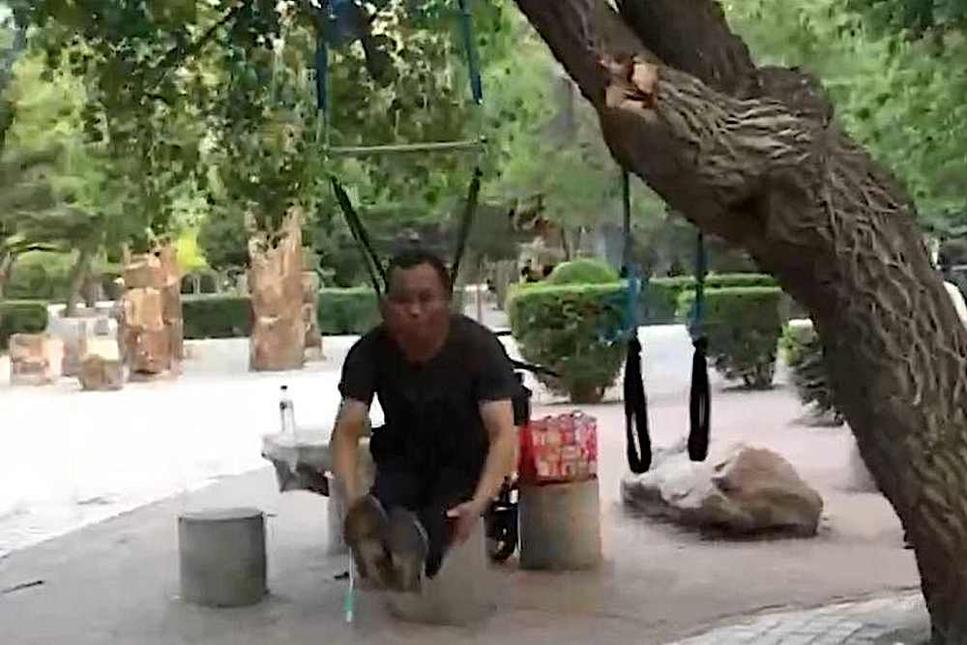Tuesday, May 21, 2024
AI (Text Version)(Artificial intelligence): Widespread adoption of AI is a national priority 2024-05-21
AI (Artificial intelligence): Widespread adoption of AI is a national priority 2024-05-21
Widespread adoption of AI is a national priority
Like other general-purpose technologies, it will be vital to achieve a high degree of diffusion.
Josephine Teo
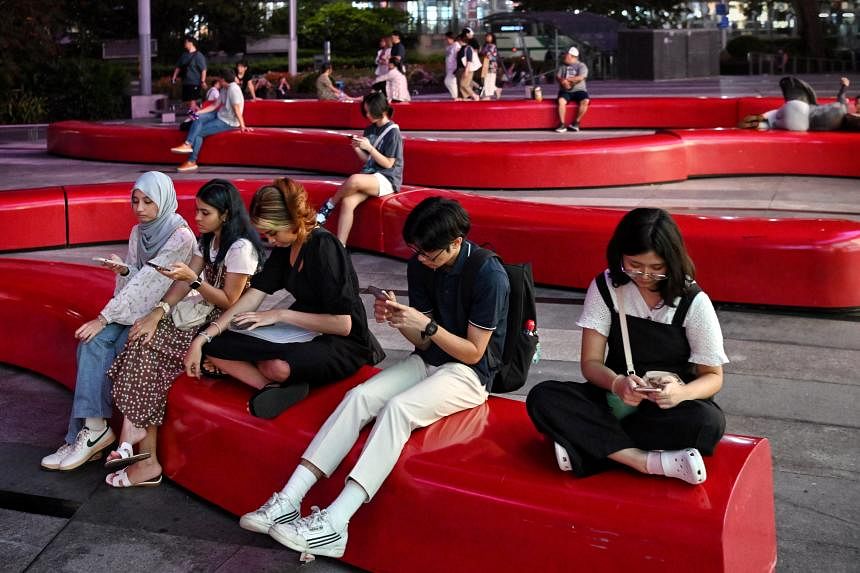
Prime Minister Lawrence Wong recently announced the renaming of the Ministry of Communications and Information (MCI) to the Ministry of Digital Development and Information (MDDI).
This follows from a decisive move last year to merge MCI and the Smart Nation Digital Government Group. This change is a natural progression, reflecting the ministry’s role in leading the national digital agenda.
Today, our officers work in partnership with other agencies to negotiate digital economy agreements, build digital infrastructure and utilities, invest in research and development for the digital domain, grow workforce and enterprise digital capabilities, strengthen cybersecurity and online safety, and enhance digital inclusion for vulnerable groups. About half of our over 7,000 officers are also focused on developing government digital services.
Our progress in advancing digital developments across our economy, society and government has attracted international attention. In recent times, I have been asked by my international counterparts why Singapore considers artificial intelligence (AI) to be a strategic national priority. Some facts are always useful to set the stage.
In 1960, before Singapore became an independent country, our per capita gross domestic product (GDP) was about US$400. Today, it has grown 200 times to around US$80,000 (S$107,640).
For a mature economy like ours, sustaining wage growth for the broad middle is no easy task. Yet, over the last 10 years, our real median wage has continued to grow at around 2 per cent per annum. Sustaining such growth requires a collective effort to raise productivity, and AI, as a general-purpose technology, has the potential to do so across many settings.
Many practical applications needed
Like other general-purpose technologies and as past waves of technological breakthroughs like the internet and mobile show, it will be vital to achieve a high degree of diffusion.
The benefits of AI are fully realised through widespread adoption, far beyond adoption by firms at the frontier. We must not only have a few dazzling use cases, but also many practical applications that may not look all that impressive but bring tangible benefits to people and organisations that use them.
AI is a strategic national priority also because of the adjustments it will demand of our people and businesses. We acknowledge the risks of job displacements and business disruptions. We are determined to ensure there are support measures in place. Everyone who is willing will get help to adapt and have new opportunities to thrive.
Budding use cases
Internationally, there is keen interest in how the Singapore Government itself will use AI. With our government expenditure at about 18 per cent of our GDP, which is less than half of the OECD average, efficiency has long been a priority. The Government will apply AI, and more broadly, digital technologies, to be more efficient.
We have been very encouraged by the enthusiasm of government officers to use AI tools at the task level. For example, the Maritime Port Authority is now developing an AI solution to verify 12,000 ship insurance documents yearly for the renewal of statutory certificates of Singapore-flagged ships. This solution will eliminate 270 man-days of manual work each year, freeing up teams to work on other tasks.
This is just one task in a single agency. If we consider what AI can do to improve efficiencies for multiple tasks performed by multiple officers across multiple agencies, we can imagine how all these manpower savings will add up.
But efficiency is not our only goal. Effectiveness in delivering public service outcomes is equally important. AI can help in at least two aspects – precision and personalisation, so we are more targeted in problem-solving and meeting citizen needs.
Train services here have already moved from corrective maintenance to preventive maintenance, with predictive maintenance now the new opportunity, where AI and machine learning can be applied.
In some hospitals, dosages can already be varied and optimised for each patient, while teachers are experimenting with personalised learning plans.
Unlocking potential
To fulfil our aspirations in AI development, the Government will partner with the industry to fully unlock its transformative potential. Our starting point is that the best solutions and practices can come from anywhere and not only within Government. If the private sector can do some things better or has tools that work well, we are happy to collaborate.
We believe industry can contribute meaningfully to AI development in Singapore in several ways.
First, in building skills. We have set aside significant funding and articulated specific aims in growing the pool of AI creators, practitioners and users here. Companies like Google, Microsoft, Oracle and Amazon have also outlined ambitious plans to equip our local workforce with AI skills. We welcome others who can work with us to train and level up our workers.
Second, in improving capabilities and competitiveness through the use of AI. This includes establishing AI Centres of Excellence (CoE) within companies or across sectors. We are working with AI solution providers to give small and medium-sized enterprises an opportunity to test generative AI solutions to improve marketing, sales and customer engagement, through a sandbox launched by the Infocomm Media Development Authority (IMDA) and Enterprise Singapore.
A third important area is in AI governance. We will need novel approaches to get the most out of AI innovations while managing the downside risks.
Take the example of AI Verify, our homegrown testing framework and software toolkit that was one of the first in the world to be introduced. In this project, IMDA worked with multinationals and start-ups alike on practical ways to validate the performance of AI systems. Last year, we set up the AI Verify Foundation to engage an even wider community of developers, practitioners and policymakers, to further develop the tool and promote its use.
I welcome industry partners to join us on this journey. By bringing together our complementary strengths, we can help keep Singapore in the global mindshare as one of the best places in the world for AI innovation, and our economy one of the most competitive.
- Josephine Teo is Minister for Communications and Information. This is an abridged version of her speech delivered at the Singapore Business Awards on May 16.
Join ST's Telegram channel and get the latest breaking news delivered to you.
Monday, May 20, 2024
Covid-19: Seniors taking wait-and-see approach to calls for additional Covid-19 vaccine dose 2024-05-20
Seniors taking wait-and-see approach to calls for additional Covid-19 vaccine dose
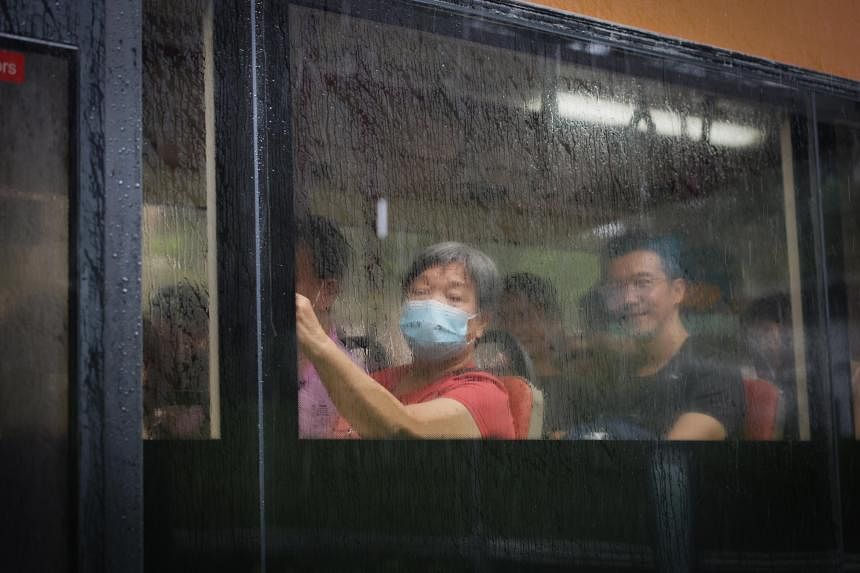
David Sun, Correspondent
Anjali Raguraman, Correspondent
SINGAPORE – At the age of 87, Mr Chou Keng Lin believes he has led a long and healthy life.
The retiree, who spent most of his working life as a cabby and odd-job labourer, said with his children all grown up, he has nothing left to worry about.
Asked if he was worried about the new Covid-19 wave here, he said he would take some precautions, but was still undecided about whether to get an additional dose of the vaccine.
He said: “I’ll wear a mask if I go to crowded places like hawker centres, but I’m not really scared of the new Covid-19 wave. I’ve already taken four doses of the vaccine, and I’m healthy.”
Mr Chou is one of eight seniors who spoke to The Straits Times following Health Minister Ong Ye Kung’s call for those at greatest risk of severe illness, including those aged 60 and above, to receive another dose of the Covid-19 vaccine if they have not done so in the last 12 months.
Mr Ong said on May 18 that Singapore is seeing a new Covid-19 wave, with rising cases of infection in the last two weeks.
The wave is expected to peak in the next two to four weeks, with public hospitals now reducing non-urgent elective surgery cases in anticipation of an increase in cases.

By signing up, I accept SPH Media's Terms & Conditions and Privacy Policy as amended from time to time.
The estimated number of Covid-19 cases in the week of May 5 to 11 rose to 25,900 cases, compared with 13,700 cases in the previous week. The average daily Covid-19 hospitalisations rose to about 250, from 181 the week before.
Mr Ong said if the number of cases doubles once, Singapore will have 500 patients in its healthcare system, which is manageable. But if it doubles a second time, there will be 1,000 patients, which will be a considerable burden on the hospital system.
Some of the other seniors who spoke to ST said they, too, were taking a wait-and-see approach following news of the new wave.
Retiree Peter Kang, 88, said he has also taken four doses of the vaccine and would consider an extra dose, but he has not made up his mind.
He said: “I try to keep away from crowded places, and I already seldom go to such places anyway. I’m still considered quite healthy.”
He said his main concern about taking another dose is the risk of side effects.
Eighty per cent of the local population have completed their initial or additional dose of the Covid-19 vaccine, but have not received a dose within the last year, the Ministry of Health (MOH) said.
The updated Covid-19 vaccines continue to be free for all eligible residents, and those enrolled in Healthier SG, a national preventive health initiative, can receive their vaccinations at about 250 participating Healthier SG clinics islandwide.
The network of such clinics is being expanded, on top of additional mobile vaccination teams being deployed to selected heartland locations in the coming weeks, in an effort to reach more seniors.
From May 21 to June 29, the five joint testing and vaccination centres will also be extending their operating hours on Saturdays and the eve of public holidays from 9am to 7pm, instead of the usual 9am to 1pm.
MOH will be sending out SMS messages to individuals who have not taken any Covid-19 vaccination in the past 12 months to remind them to keep their vaccination up to date.
They can visit https://gowhere.gov.sg/vaccine to locate the nearest vaccination site and the types of vaccines offered at each site.
Other seniors told ST that they would not get an additional dose unless it was made mandatory.
Mr Goh Ah Siong, 75, a retiree, said: “We old people are scared to take the vaccine because we are scared of jabs... I’ll get another dose only if the Government says I must.”
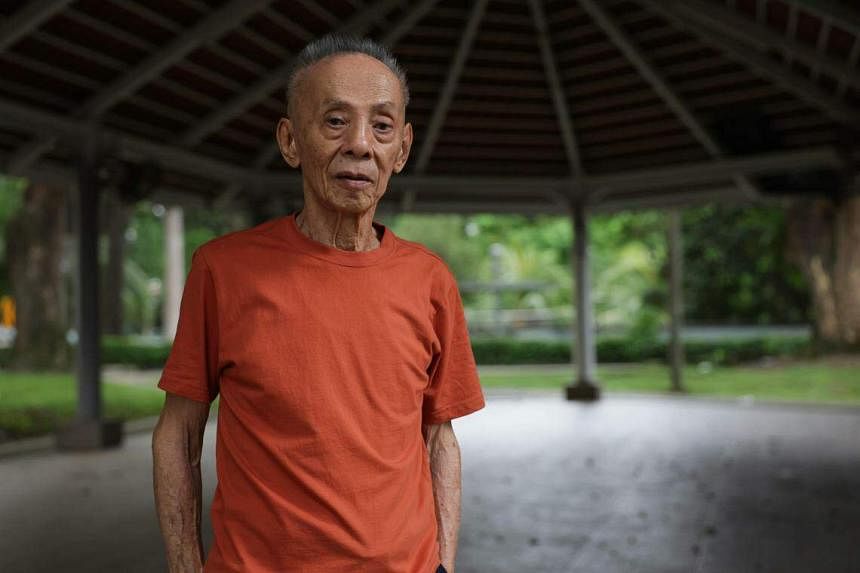
Madam June Chong, 72, a cleaning supervisor, said she has already taken four doses of the vaccine and was not keen on taking another as her last jab had hurt her arm.
She added that she has always been taking precautions and continued wearing a mask in crowded places even after it was no longer mandatory.
She said: “This sort of thing (Covid-19 wave), it comes and goes... Covid-19 is just like a cold and cough. We treat it as normal now and have already adapted to living with it.”
Join ST's WhatsApp Channel and get the latest news and must-reads.
Sunday, May 19, 2024
Tech for Seniors: Middle-aged and scared of turning into a tech dinosaur? Here are some tips

Middle-aged and scared of turning into a tech dinosaur? Here are some tips
The struggle to keep up with tech is real, as this writer finds out at an industry conference.

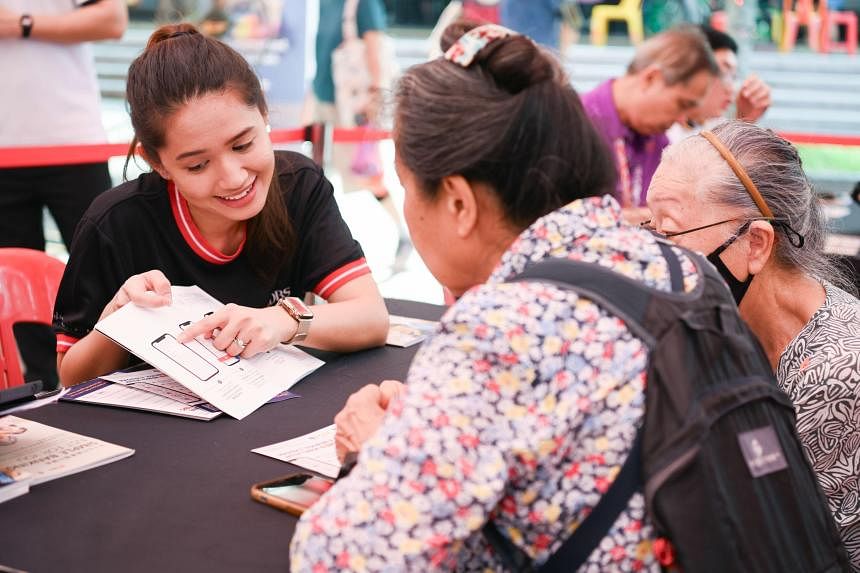
I raise my hand to ask a question and instead of being handed a microphone, a fluffy cube is tossed my way like a beach ball. Thankfully, I do not drop the ball – which I later learn is called a Catchbox – and clutch it with both hands as I speak into it. Question delivered, I lob it back at the usher, grateful for the basic netball skills we were taught at school.
Regular attendees of tech events may view flying microphones as normal, but I was at a conference of news media companies, the industry that still prints paper and employs journalists who still take handwritten notes.
Of course, we were all gathered there in London to learn how to better transition into the digital age and make money from it, and harness the next big thing – artificial intelligence. Which partly explains the high-tech high jinks.
Case studies on global brand names were examined, experts told us how they mined big data, and millennials told us old folks how they packaged news for young audiences.
As I grappled with the novel ideas and industry jargon – APIs (application programming interfaces), finite scroll, third party cookie deprecation, privacy sandbox – it occurred to me that it’s so easy to fall behind on the fast-moving advances in technology. And that a wireless, throwable microphone – which promises to “engage audiences and spice up events!” – holds lessons for the middle-aged like me, who want to avoid turning into tech dinosaurs as long as we can.
First lesson: Don’t shy away from what’s new, even if it comes barrelling at you. Face it, embrace it with arms open wide and if you fumble, just pick it up and try again. What’s the worst that could happen?
My 86-year-old mum is a cautionary tale in this respect. Decades ago, when she was still working as a teacher, she refused to learn how to use a computer because she was afraid she would “press the wrong button and the machine would explode”. She left the job when the school head introduced compulsory computer training for all staff.
Ditto her approach to smartphones, so my brother and I are reduced to calling her on the house landline from overseas using Skype – both modes of communication that sound so antiquated today.
The reality is, the microphone-in-a-box continued working despite being bounced around and occasionally dropped. Your laptop will not burst into flames if you can’t figure out your Ctrl + X from your Ctrl + V. Though you will save yourself a lot of heartache by remembering how to Ctrl + Z and Ctrl + S.
Yet this fear of something exploding, or of looking stupid when it happens, is completely understandable. No one wants to look inept. Or, in the case of the Catchbox, like they have poor hand-eye coordination.
Save for psychopaths, most of us share similar fears and are therefore empathetic or forgiving of mistakes. We’re no longer in the playground being jeered at by the school bully and his hangers-on.
Instead, we’re in a meeting room with many helpful colleagues repeatedly shouting out the same instructions until you get it right. This was how I finally learnt to share my screen on a Zoom call in 2023 and maximise the document so that everyone could read it. There was some embarrassment on my part, but much laughter and goodwill all round.
This “no one left behind” approach is also adopted by the Singapore Government to help those who are less tech-savvy, which includes the elderly and the less-privileged.
The Infocomm Media Development Authority has in the last few years rolled out programmes aimed at promoting digital literacy and bridging the digital skills gap, including by offering seniors subsidised mobile phone subscriptions at just $5 a month and digital skills training.
Which brings me to the next lesson: Hang out with young people, but not in a creepy uncle way.
When self-help, online tutorials and auntie clubs fail, you can turn to that source of boundless energy that is Gen Z, and they will give you the answers in an enthusiastic, totally woke and non-judgmental way. Just be prepared to ask them to repeat themselves.
In my experience, they speak too fast for my ageing “cognitive horsepower” – more jargon from the conference – because they are busy people breaking new frontiers.
But also be prepared to have them make you feel old.
“It’s like I’m your daughter for the day,” quipped a 29-year-old colleague I visited recently in Manila, as we posed for photos at lunch. I’ll take it. It’s better than being asked if you have any grandchildren, like my professor husband was at a recent student event.
Still, I learnt from my work daughter that you should set your phone camera zoom to 0.5x instead of the usual 1x to get a better wefie.
Weeks earlier, another younger colleague surprised us by taking wefies with the phone screen facing away from him. Impressive, but I might not invest my limited hours left learning that party trick.
Asking stupid questions

I’m also a firm believer in asking the stupid question. The obvious answer to that question is not the end goal. But showing you are open to learning things you were ignorant of just five minutes ago is. This also nurtures an environment where exchanges of ideas thrive, as people let down their guard because they’re not worried about being the stupidest person in the room.
If you’re faint-hearted about taking on this role, you can always preface your question with “This might sound like an obvious question, but...”.
A friend who has transitioned from being a journalist to leading a tech team providing solutions for the newsroom is more candid. “I just stop them halfway and say, ‘I’m lost’,” she tells me. “How else do you keep up and learn?” Of course, it helps that she’s their boss, but you get the point.
A final tip: Keep playing.
I could have handed the microphone back in the old-fashioned, passing-the-parcel kind of way, but where’s the fun in that? Choosing to engage and not be a spoilsport is often more fulfilling.
Also, the beauty of new tech is that there are armies of coders, software engineers and designers who are dedicated to making it as user-friendly as possible. The best way of discovering all the bells and whistles they’ve created in the new app or system is to play with it.
No dancing, please
You can do it on your own terms too. At the conference, we heard about a senior print journalist from Brazil who gamely agreed to present her well-read political analyses on another platform: TikTok. Her only caveat? No dancing.
Just a few days ago, I read in The Guardian that some people are using office management software to optimise their love life and better manage their marriages. Meanwhile, The Economist tells us that Gen Zs are using TikTok for career advice.
I will have to check with the family’s chief technology officer aka the husband whether we want to adopt Slack or Trello to track our date nights, grocery shops and travel plans. And I’m with the Brazilian journalist about not dancing on TikTok.
But I’m determined not to be like the academic I met in 2016, who refused to get a smartphone and was only contactable via e-mail or landline. (He may have caved in by now, but I have no idea because we have lost touch.) Or the friend who shuns Google Maps and still lugs around a battered copy of the London A-Z Street Atlas.
Who knows where this ongoing adventure will lead? My next column may even be brought to you by ChatGPT.
Join ST's Telegram channel and get the latest breaking news delivered to you.







